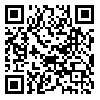BibTeX | RIS | EndNote | Medlars | ProCite | Reference Manager | RefWorks
Send citation to:
URL: http://jdm.tums.ac.ir/article-1-211-en.html
Background and Aim: Accurate measurement of bone height and width is essential prior to dental implant placement. The method of surgery as well as, the type and size of implants are determined according to dimensions of the residual bone. The purpose of this study was to evaluate the accuracy of linear tomography in localization of the floor of nasal fossa and maxillary sinus, and to determine the width of maxillary bone at the designated site for implant placement.
Materials and Methods: In this test evaluation study, the vertical distances between the alveolar crest and the floor of nasal fossa and the floor of maxillary sinus was measured by the tomographic slices in 12 sites of three dry human skulls. In addition, the width of maxillary bone was measured at the same slices. The skulls were then sectioned through the marked places. Then the radiographic values were compared with the real values of bone sections.
Results: After correction of tomographic values by the magnification factor of the unit, the mean absolute measurement error for vertical values at nasal fossa and maxillary sinus area in tomographic slices were 0.28 mm (SD= 0.24) and 1.1 mm (SD= 0.68) respectively. The mean absolute measurement error for maxillary width at the nasal fossa and maxillary sinus area were 0.65 mm (SD= 0.50) and 0.55 mm (SD= 0.45) respectively. 100 % of vertical values at nasal fossa area and 50 % of vertical values at maxillary sinus area were within ± 1 mm error limit. In addition, 50 % of width measurements at nasal fossa area and 83.3 % at maxillary sinus area were within ± 1 mm error limit.
Conclusion: The linear tomography is more accurate in height estimation at nasal fossa area and in width estimation at maxillary sinus area. The accuracy of linear tomography in height and width estimation is within acceptable limits at both nasal fossa and maxillary sinus area.
Received: 2006/12/29 | Accepted: 2007/09/16 | Published: 2013/08/19
| Rights and Permissions | |
 |
This work is licensed under a Creative Commons Attribution-NonCommercial 4.0 International License. |




